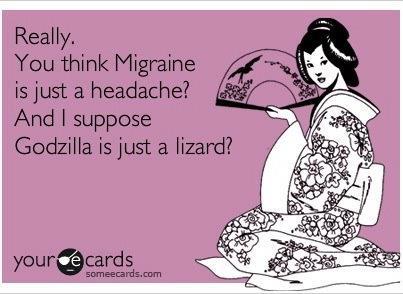The awesome advocates of the American Headache and Migraine Association have put together an impressive array of events and information for the June 2013 Migraine & Headache Awareness Month, all centered around the theme of Unmasking the Mystery of Chronic Headache Disorders.
The second annual Migraine & Headache Awareness Month Blog Challenge is underway with 30 days of movie-inspired prompts. Write for your existing blog or start a new one just for the month. If you don’t have a blog, you can respond to the prompts and post your insights on social media or write in a journal to share with those close to you. Even if you don’t show your writing to anyone else, writing down your thoughts about migraine or headache will raise your own awareness about its impact on your life. If you don’t start with yourself and your own beliefs, how can you influence anyone else?
Check the Fighting Headache Disorders blog daily for links to tons of blog posts. And be sure to read what the patient advocates at Migraine.com have to say in response to prompts (I’ll be writing four of them). Find bloggers’ favorite posts from the challenge in this month’s Headache Disorders & Migraine Blog Carnival.
Not a writer? You can participate in a Twitter challenge or daily photo challenge. Use social media to share facts about migraine and headache disorders (already compiled!) or post photos that document your life with migraine or headache. Be sure to tag your posts with one of the following hashtags so others can find what you share: #MHAM, #MHAM13, #MHAMBC (blog challenge), #MHAMTC (Twitter challenge), #MHAMPC (photo challenge)
Not a writer or social media user? Print out these migraine and headache disorder facts to hang in your office, community bulletin boards, or neighborhood telephone poles.
Phew, that’s a lot! I’m so appreciative of all these opportunities and can’t wait to see all the contributions.
Even if you don’t participate in any of these organized activities, I urge you to do at least one thing this month to increase someone else’s understanding of migraine or headache disorders. Maybe that’s describing to a non-migraineur how crippling a migraine attack is or telling someone who thinks migraine is “just a headache” about the numerous and varied symptoms a migraine can include. Perhaps you let someone who has mild, episodic migraine attacks that are treated with OTC meds know that may people get no relief from drugs, OTC or prescription, and others are disabled by daily migraine attacks.
Or you could do something even more difficult for most migraineurs — don’t diminish how severe your attacks are or pretend you feel better than you do. Oftentimes we choose to put on the masks that hide the severity of migraine. That may get us through our day-to-day tasks, but it also prevents others from having any real grasp on what life with migraine is truly like.

